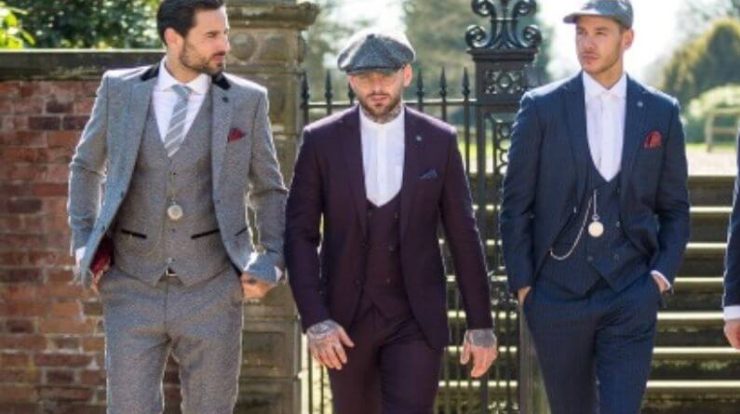
Wedding suits
The importance of formality cannot be overstated for the average wedding. Ben Clarke, head cutter at Richard James, advises men to opt for “a versatile, ever-smart three-piece suit that flatters your proportions.” Colors should be used consistently if a scheme has been established. Mid-tone grey works with everything, while navy is universally flattering and can be worn by people of any skin tone. When wearing a waistcoat, a belt is inappropriate and should be avoided at all costs if you opt for a three-piece suit.
“Weddings in the sunshine call for less formal attire, so think airy pastels and floaty fabrics” (less padding and canvasses). Clarke explains that during the summer, “soft linens, cottons, and summer wool frescos all come into play.” A suit for a wedding guest doesn’t have to cost as much as the wedding itself. You can find something to fit your budget at high-end designers like Alexander McQueen or at high-street favourites like Marks & Spencer.
Summer suits
The warmer weather finally allows you to switch up your suiting. When compared to their winter-ready counterparts, summer suits need to be more breathable (think: linen, silk, or fine merino wool) and airy (think: light, bright colours) to match the season. Even more in the vein of John Legend, you could choose suits in bright colours like yellow and purple.
There is more room for experimentation when donning a summer suit; for example, you could replace your shirt with a vest (a la Harry Styles and Kanye West) or even go shirtless (as seen on the Louis Vuitton and Dior runways).
See Also: Some Of the Greatest Life Hacks of All Time We Use
Wool suits
You may not particularly enjoy the colder temperatures that winter brings, but at least you have an excuse to break out that wool suit you’ve been meaning to buy. It’s more comfortable to wear than tweed and strikes a good balance between ease of movement and staying warm, so it’s our go-to from fall to spring (give or take a few, remembering we still live in temperamental Britain). In the colder months, wool is preferable to, say, linen because it will keep you much warmer.
If you’re looking for an alternative to polyester, wool is a better option because it has fewer negative effects on the environment. Wool can biodegrade in a matter of months when you want it to, and it won’t contribute to microfibre or plastic pollution in the process. There are no losers here (unless the sun is scorching).

